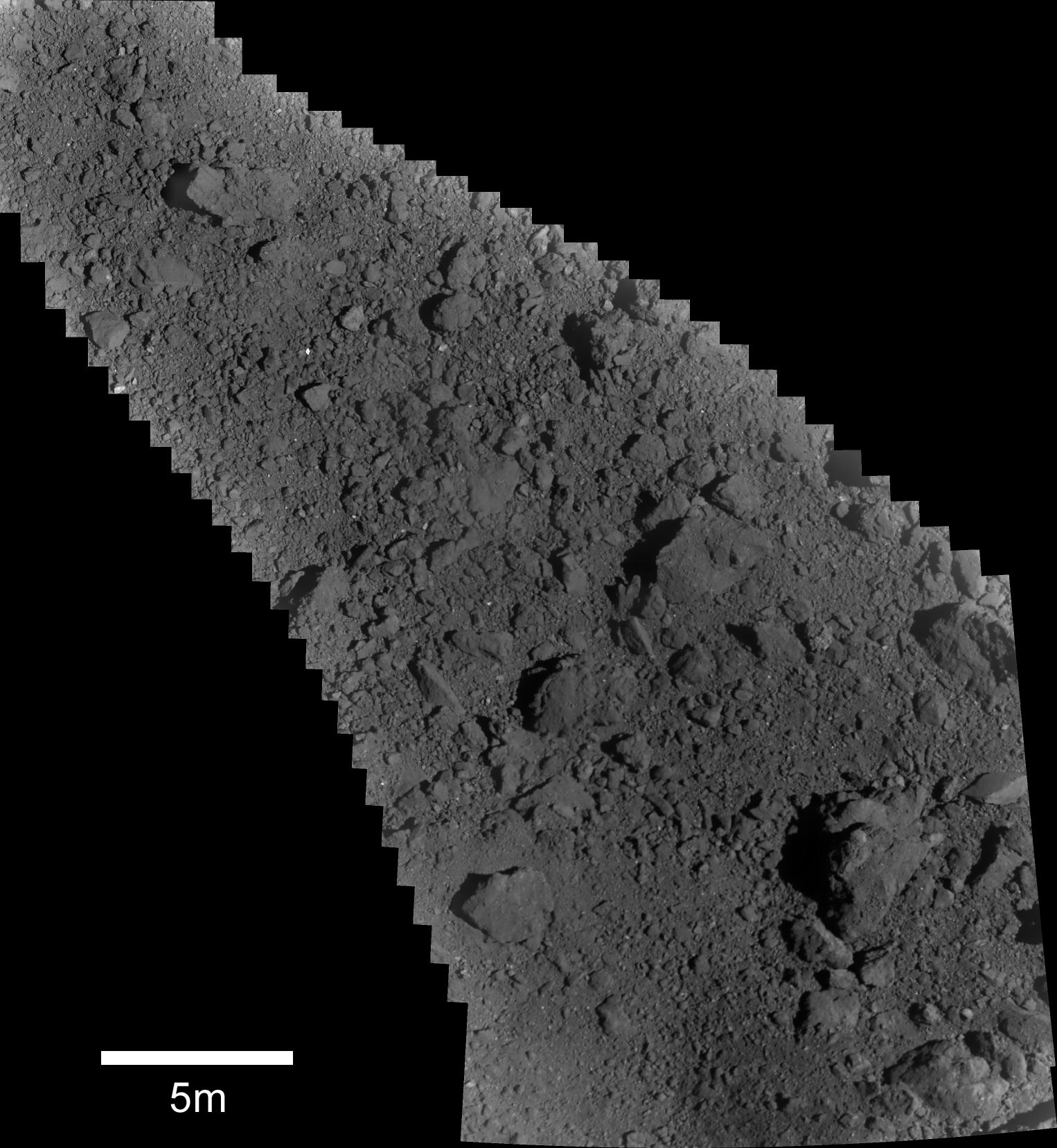Our first touchdown took place this year on February 22. Then as a new challenge for the Hayabusa2 Project, we succeeded in creating an artificial crater using the Small Carry-on Impactor (SCI) on April 5. The last big operation left at asteroid Ryugu is the collection of subsurface material exposed with the creation of the artificial crater. In order to collect this material, we need a second touchdown for which the project has been steadily preparing. At this point, it has not yet been decided whether or not to go ahead with a second touchdown, but here we will introduce our preparations in the “Approach to the second touchdown”.
After the operation to form the artificial crater, the spacecraft descended a total of four times above or near the crater site. These descent operations allowed us to obtain detailed data of the region near the artificial crater. In addition, we succeeded in dropping a target marker in the area close to the artificial crater on May 30. Combined, these operations mean that the situation around the artificial crater is now well understood.
Figure 1 shows an image taken during the low altitude descent observation operation (PPTD-TM1B) conducted from June 11 – 13. The target marker was captured in the image and you can get a handle on the state of the surface.
-

[Open in a separate window]
Figure 1: Image taken on June 13, 2019 during the operation PPTD-TM1B. This is a composite of 28 images taken at 7 second intervals starting from 10:58 JST (upper left) to 11:01 (lower right) using the Optical Navigation Camera – Telescopic (ONC-T). The image altitude is about 52m at the start and 108m at the end. The white point in the upper-left center is the target marker. You can see that detailed images have been acquired continuously from the target marker to the edge of the artificial crater, located in the lower-right of the image. (Image credit ※: JAXA, Chiba Institute of Technology, University of Tokyo, Kochi University, Rikkyo University, Nagoya University, Meiji University, University of Aizu, AIST.)
As you can see in Figure 1, asteroid Ryugu is covered with boulders. If we go for a second touchdown, we need to aim for a point close to the target marker which has no obstacles. The project is currently examining this area in detail.
※ Please use the displayed credit when reproducing these images. In the case where an abbreviated form is necessary, please write "JAXA, Chiba Institute of Technology & collaborators".
Hayabusa2 Project
2019.06.19

